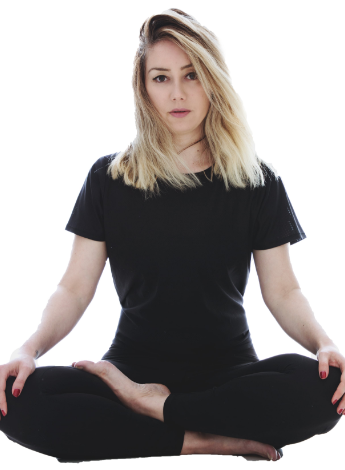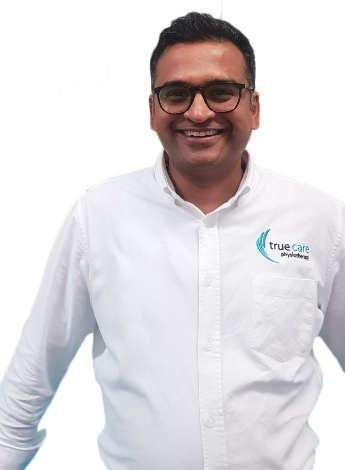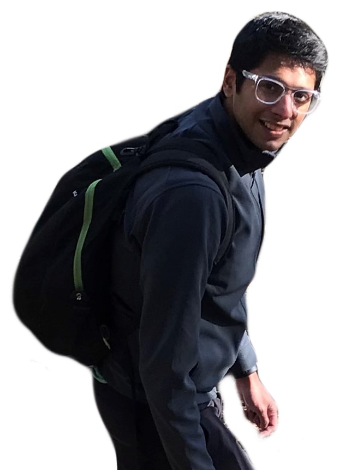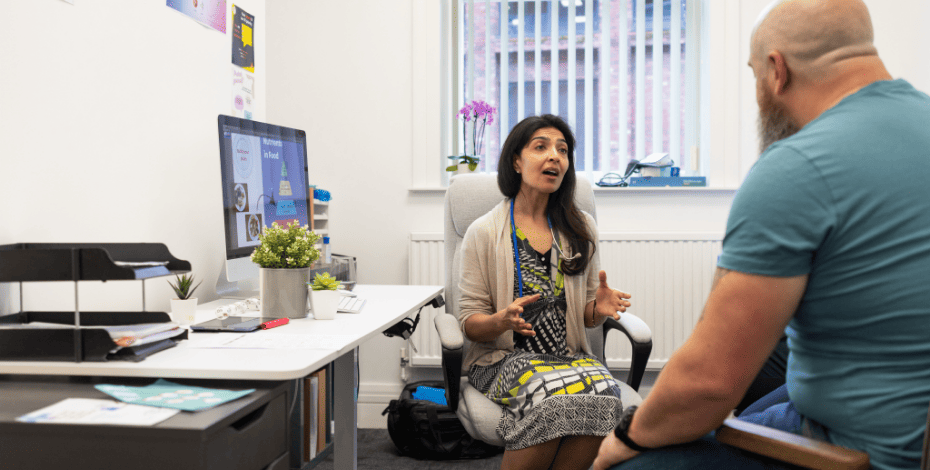
Enabling overseas physios to help fill the void

The number of overseas-trained physiotherapists practising in Australia is on the rise to help meet the widening gap between the number of qualified professionals and growing demand for physiotherapy services in this country. In this first of a two-part series, Melissa Mitchell explores the changing face of the physiotherapy workforce in Australia.
Viewed singularly, the prediction that by 2022 Australia will have a 6,500 shortfall in the number of physiotherapists practising in this country is alarming. But when it is examined alongside the increasing number of new graduates flooding the market, and the profession’s attrition rate, the prediction of such a yawning gap is setting off warnings in the profession’s regulatory bodies and in tiers of government.
Rather than vacillate as the anticipated divide between supply and demand deepens in the next decade, steps are being taken now to meet the shortfall. One of those steps includes ensuring assessments of overseas-trained physiotherapists are as efficient as they are robust—and the Australian Physiotherapy Council (APC), the body licensed by the Australian Health Practitioner Regulation Agency to assess overseas-trained physiotherapists coming into this country, is perfecting a process that can be expediently scaled to meet this and the future needs of Australia.
‘If I look at the government numbers that we received in the last two months, by 2022 Australia is going to be 6,500 physios short,’ APC chief executive officer Anton Barnett-Harris says. ‘The university sector is growing the number of candidates coming into the system, but our attrition rates are still quite high, people don’t stay in the industry for their whole lives. The last number I got was about 3.5 per cent attrition rate.
‘The way we see the future, especially for aged care and those fast growth areas, is by accessing international candidates—really good ones. I don’t want to get to 2022 and the government says: “We have a major problem, get people in here quickly”. We want to do it in an orderly and planned way,’ Anton says. ‘So we are trying to really be proactive and to work with partners like the APA and the Physiotherapy Board of Australia to navigate that future in a very clear and ordered way so that we are not scrambling at the last minute. We need to ensure that all successful candidates coming to Australia are safe to practise and that quality is never compromised.’
One of the major barriers to efficiently scaling up the Standard Assessment Pathway—the route by which a majority of overseas- trained physiotherapists have their qualifications assessed to work in Australia—is the complex arrangement that is made between the APC and hospitals to negotiate the use of already limited health resources for assessments.
The APC’s solution was through trialling the use of simulation, conducting assessments in a controlled environment with standardised patients, but through a format that does not compromise on the ability of the clinical assessment to assess a broad spectrum of applied knowledge and skill. Developed through a collaborative research partnership with Western Sydney University, the ground-breaking trial establishes evidence for the use of simulation in a novel assessment format relevant to physiotherapy.
With all the actors in place, you could easily mistake walking into the ‘sim lab’ in Melbourne with that of a fully functioning hospital room, such is the level of realism and the attention to detail that the lab is almost indistinguishable from the real thing. The high-quality actors are wearing pyjamas, they’re shuffling to the toilet, they’re unshaven, unkempt and they genuinely look sick. And that’s precisely what the APC wants.
‘All the data that we’ve received from the project, and we’re about 90 per cent of the way there, really supports us implementing simulation,’ Anton says. ‘We will go live with simulation hopefully in April.'
ANTON BARNETT-HARRIS
The trial of simulation was also one of several dramatic steps introduced by the APC over the past 18 months to shorten waiting periods that had plagued many overseas trained physiotherapists seeking assessment to have their qualifications recognised—and Anton acknowledges that the steps are working.
A few years ago, wait times of three years or more to pass through the standard assessment pathway were not unheard of, with some physiotherapists having to seek employment outside the profession until they could have their qualifications assessed. Horror stories of overseas-trained physiotherapists ‘going broke and going home’, of waiting many months only to fail the written or clinical assessments, some after multiple attempts, were not unheard of. Undoubtedly this caused damage to Australia’s professional reputation as having some of the best physiotherapists in the world, a reputation Anton hopes will be bolstered by this more streamlined and accessible assessment process.
The faster process introduced at the APC has already slashed the wait time to about 18 months, and with it has also significantly reduced the backlog of about 1200 candidates to sit at just over 400. In April this year, the APC is also expected to go live with the simulation lab, officially introducing it into the standard assessment pathway. Anton says current research into the trial has been positive, as has been the support of the APC Board of Directors who approved the trial back in 2017. This will continue to ease pressure on waiting times, Anton says.
‘All the data that we’ve received from the project, and we’re about 90 per cent of the way there, really supports us implementing simulation,’ Anton says. ‘We will go live with simulation hopefully in April. The knock-on effects of that will be quite dramatic.’ And if the simulation laboratory in Victoria is a success, consideration will be given to expanding the concept through purpose-built labs in Western Australia, Queensland and New South Wales, Anton says.
Simulation is part of the clinical assessment—the final step in the standard assessment pathway. The first step in the process, the eligibility assessment, can be completed while a candidate is still overseas, while the second step, which is the written online assessment, can be completed either in Australia or in selected countries such as India, New Zealand, Singapore, the United Kingdom and the United Arab Emirates. Each step in the process attracts a fee ranging from $1100 to $4125.
Having been through the standard assessment pathway and undertaking the clinical assessment in the simulation laboratory, Sinan Tejani, APAM, says he feels he ‘got a bit lucky’ as the process took him just 18 months from start to finish.
‘I did a lot of research and I spoke to a lot of Indian physiotherapists who had moved here … and it was quite daunting, I’ll be very honest. When you speak to them they really make it sound quite difficult, and it is,’ Sinan says.
‘I expected it to be hard and it was hard— but it can be done. Because you’re being graded as an entry-level physiotherapist all you have to do is work hard towards it. If you work hard towards it, it is quite doable.’
Having embarked on studying a Master of Physiotherapy in Australia, Sinan says this helped him better hone his clinical reasoning skills, which in turn helped him through the clinical assessment.
Sinan says his Indian qualifications made an entry via the alternative entry point for overseas-trained physiotherapists, the APC’s Equivalence of Qualification pathway, more difficult. This complex but faster process, compared to the Standard Assessment Pathway takes between eight and 15 weeks, and is for those candidates who have graduated from a university program very similar to an approved one in Australia.
The Equivalence of Qualification Pathway is also a challenging process for overseas-trained physiotherapists that requires the collection of specific documents from their university for submission to the APC for assessment—and these are accreditation documents not normally in the public domain. Recently, the APC increased the number of assessors sitting on the evaluation panel in Australia, and this, Anton says, is hoped to speed up the assessment process further.
But underpinning both pathways is the APC’s duty of care to ensure that physiotherapists coming into Australia are of a standard where they can practise safely and effectively, and that people seeking the services of those physiotherapists are not harmed in any way, Anton says. The safety of the public remains the paramount focus of the assessment process.
For APA member Berna Gungoren Can, applying for assessment via the Equivalence of Qualification Pathway meant challenges not only in language but also in the different documentation systems between her alma mater, Hacettepe University in Ankara, Turkey, and the requirements in Australia.
‘I started to look at the APC website to find out what kind of pathways I could have. I wanted to go with the first option, which was the equivalence pathway, so I started to read about that every day, learn about what they want and provide the most important information to my university. APC really helped me during this process, and I got my overseas qualification recognised. I am so happy to be a registered physiotherapist in Australia now,’ Berna says.
‘I found that language was the most difficult part because even though my university provided the specific documentation required by the APC, there were some words that didn’t match in English. That’s why my university had to make sure the content of the documentation did not cause any confusion as providing information about a university’s education system in a different language, which could be really difficult.’
If overseas-trained physiotherapists considering coming to Australia put in the hard work, do their own research beforehand, and learn from those who have been through the process, Berna says the system is in place to help them through.
A determination to succeed is also an important attribute to have, as APA Sports and Exercise Physiotherapist Bhaumic Patel can attest. Years ago, Bhaumic made several attempts at passing the clinical examination process before he was successful. In his first attempt, Bhaumic passed the cardiorespiratory exam but failed the neurological and musculoskeletal elements. In his second attempt he passed the neurological but failed the musculoskeletal element, and he failed the musculoskeletal element again a third time.
Bhaumic embarked on a postgraduate physiotherapy diploma to help him better understand the Australian healthcare system and the culture but also faced severe financial hardship and challenges in being granted work visas. After he passed the exams, Bhaumic continued his learning by completing a Master of Physiotherapy (Sports) and by becoming a titled sports physiotherapist.
Bhaumic now practices at TrueCare Physiotherapy in Bairnsdale, 280 kilometres east of Melbourne in regional Victoria, but believes that better educating overseas trained physiotherapists about the Australian healthcare system and the country’s culture would likely improve their chances of overcoming some of the hurdles to working in this country.
‘They need to set up a system where we let the students, or whoever wants to come here, know that it’s not an exam-based thing, it’s not about judging or equivalence but about learning different culture and a different system,’ Bhaumic says. ‘It’s a privilege that overseas physios want to come here.
Rather grilling the overseas physios with the pressure of exams, it would help to show them what the expectations are and having a process to teach, nurture and guide them with a formal process similar to a university.’
Attracting overseas-trained physiotherapists to consider working in Australia is another challenge for the profession, and APC’s chief executive Anton believes Australia needs to do more in this space now to avoid missing out.
‘I know the numbers in the UK are alarming and they’re being much more proactive about attracting international candidates there, and even to the US,’ he says. ‘We know the shortfall is coming but we haven’t properly experienced it yet, and in the next 10 years that is going to ramp up things quite dramatically. Australia is an incredible country to come and practise in. We’re doing incredible things, world leading things in the world of physiotherapy, and it really is a great place to work as a physio.’
Berna’s story

Berna Gungoren Can emigrated to Australia in 2014 after she and her husband Evrim spent time here in 2012 while Evrim undertook a Master’s degree at Melbourne University. Unable to practice as a physiotherapist, Berna instead took courses in massage therapy, sports and nutrition, aromatherapy and reflexology to hone her skills in holistic health. She also pursued her passion for Pilates and yoga, becoming a certified yoga instructor.
After briefly living in India and returning to Turkey, the couple then decided to make Australia their permanent home and Berna vowed to do whatever was needed to get registered to practice physiotherapy in Australia. In Turkey, Berna had been working as a physiotherapist with special needs children and she had later combined her passions for yoga and for physiotherapy by opening up the Avidya Yoga and Physiotherapy centre, which she ran for two years.
Drawn by the cosmopolitan lifestyle in Melbourne’s inner city, the couple settled in South Yarra and Berna worked tirelessly on her English language skills and spent countless hours researching the accreditation process on the computers at Toorak Library.
Berna now works in residential aged care as a physiotherapist, she teaches yoga and meditation and writes blogs about physiotherapy, yoga, meditation, nutrition and more.

Bhaumic’s story
His first day in Australia was a bit of an awakening for Bhaumic Patel. Arriving in Melbourne from Mumbai in India, and travelling 165 kilometres east to Traralgon in regional Victoria to undertake his clinical placement, Bhaumic had his first introduction to Australian bushfires.
Not knowing anyone in Australia, Bhaumic arrived on a visitor’s visa with a provision allowing to further study, so he embarked on a Master of Physiotherapy (Sports) through Melbourne University and he has since become a titled APA Sports and Exercise Physiotherapist.
Bhaumic works in private practice at TrueCare Physiotherapy in Bairnsdale, in regional Victoria, and he is also engaged in teaching other physiotherapists in the community. He has a special interest in treating chronic pain conditions such as fibromyalgia, polymyalgia and chronic fatigue syndrome.
When Bhaumic is not working, he loves to take his children fishing in the local rivers or take a spin on his Harley Davidson motorbike, and every year he rides in the annual toy ride.
Sinan’s story

Sinan Rafik Tejani arrived in Australia from his native Mumbai in India in 2015, and set about using his education at D Y Patil University in Navi Mumbai and his experience practicing sports and musculoskeletal physiotherapy at Prakruti Physiotherapy Clinic in Mumbai to enrol to study a Master’s in Sports Physiotherapy at Curtin University.
‘I did want to do my master’s here and because I was really interested in sports at that time, and if you look at all the countries that offer postgraduate degrees, I think Australia is ahead of everyone as far as exposure is concerned, as far as research is concerned— it really is much better here,’ Sinan says.
‘And Australia is sports crazy as well so I think it tied in well, and it was something different. All my friends were going to America and the UK, and Australia was really hard to go to because of the strict laws and rules. It was a challenge.’
Sinan and his partner, Tanushka Alva, both passed through the accreditation process together and have since applied for permanent residency. Enjoying the work/life balance offered in Burnie, north west Tasmania, the couple has also recently been granted scholarships to take part in the Pain Revolution’s Local Pain Educator program in Tasmania this year.
© Copyright 2025 by Australian Physiotherapy Association. All rights reserved.





